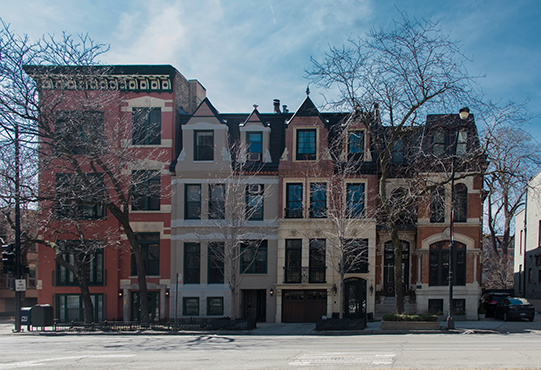Here in Chicago and other cities there are many two unit buildings that are very old. Often buyers see them as a chance to create a new single family home. This is because the cost may be lower than buying a new home from a developer, or it may be the property is located in a historic area or even a great school district. These 2 unit properties may be purchased at a great price due to age, or as an estate sale or foreclosure. But if they are solid they could make for a great new 21st century single family home. The conventional rehab loan by Fannie Mae, called HomeStyle allows such a de-conversion from a two family building to a one family building.
Not only that, but an investor can buy a two unit with HomeStyle to remodel into a single family to lease out or sell later. This may be appealing to an investor who was not able to find financing to acquire and rehab a multi-unit property. So instead an investor can use HomeStyle to both acquire the two unit property and borrow funds to rehab it into a single family, all in one loan. The loan can include funds to dig out the basement to make for higher ceiling height, add an attic dormer for more square footage, add a deck or porch, new water line service from the street, new plumbing, new electric, new drywall, new windows, etc. Even appliances, landscaping, garage and fencing can be funded out of the loan.
The HomeStyle conventional loan limit in Illinois and most states is $417,000 on a single family property. But the rule is the rehab dollars portion of the loan cannot be more than 50% of the “as completed” finished value.
An example would be purchasing a two unit at $200,000. With the budget for rehab into a single family at $150,000 per the contractor & architect. Note that HomeStyle requires an emergency reserve of at least 10% of the rehab budget at all times. This is to protect both the buyer and lender should there be unforeseen issues causing extra cost such as covered up fire damage behind walls, mold, foundation leaks, structural flaws, etc. For an investor the required down payment is 20% of the purchase price and of the funds to rehab. Next add architect & permit fees of say, $5000.00. A part of any HomeStyle loan will be title update/check fees and draw inspection fees. Each time the contractor wants to be paid a construction inspector is sent to view the completed work and authorize a draw out of funds in the rehab portion of the loan. Assuming 4 such inspections and draws the total fees might be $2525.00. The total of the rehab portion of the loan is then $172,525.00. This is the base budget of $150,000 + 10% reserve of $15,000 + architect/permits fees of $5000 + draw/title fees of $2525 = $172,525.
Assume the finished & completed value of the home is appraised at the beginning to be $400,000. An “as completed” appraisal is always done based on contractors detailed proposal on HomeStyle loans so everyone knows the project is viable during loan approval. Then the 50% rule is applied where the rehab portion of the loan or $172,525 here, is then 43.13% of $400,000 appraised value. The 50% rule is satisfied as the rehab portion cannot be more than 50% of the “as completed” value or $200,000 in this case. It is not as the rehab portion is 43.13% of the finished value of $400,000.
As an investor the down payment is 20% of both the acquisition cost and of the total rehab cost. An owner wishing to occupy may have a 10% down payment or by exception a 5% down payment. In this case that is $200,000 + $172,525 = $372,525 X .20 = $74,505 down payment. The mortgage is then $298,020 or 80% of the total. I hope this example was helpful in showing how an investor or owner occupier can buy and renovate 2 unit into a single family home to rent out or sell after construction is done.
I hope this post has been helpful and encouraging to those that may have thought a Renovation project was too complex or beyond their ability to manage. My intent is always to inform, educate, and generate discussion. Please call me or email me directly or visit my website for more information on renovation loans. I welcome your comments and questions!

